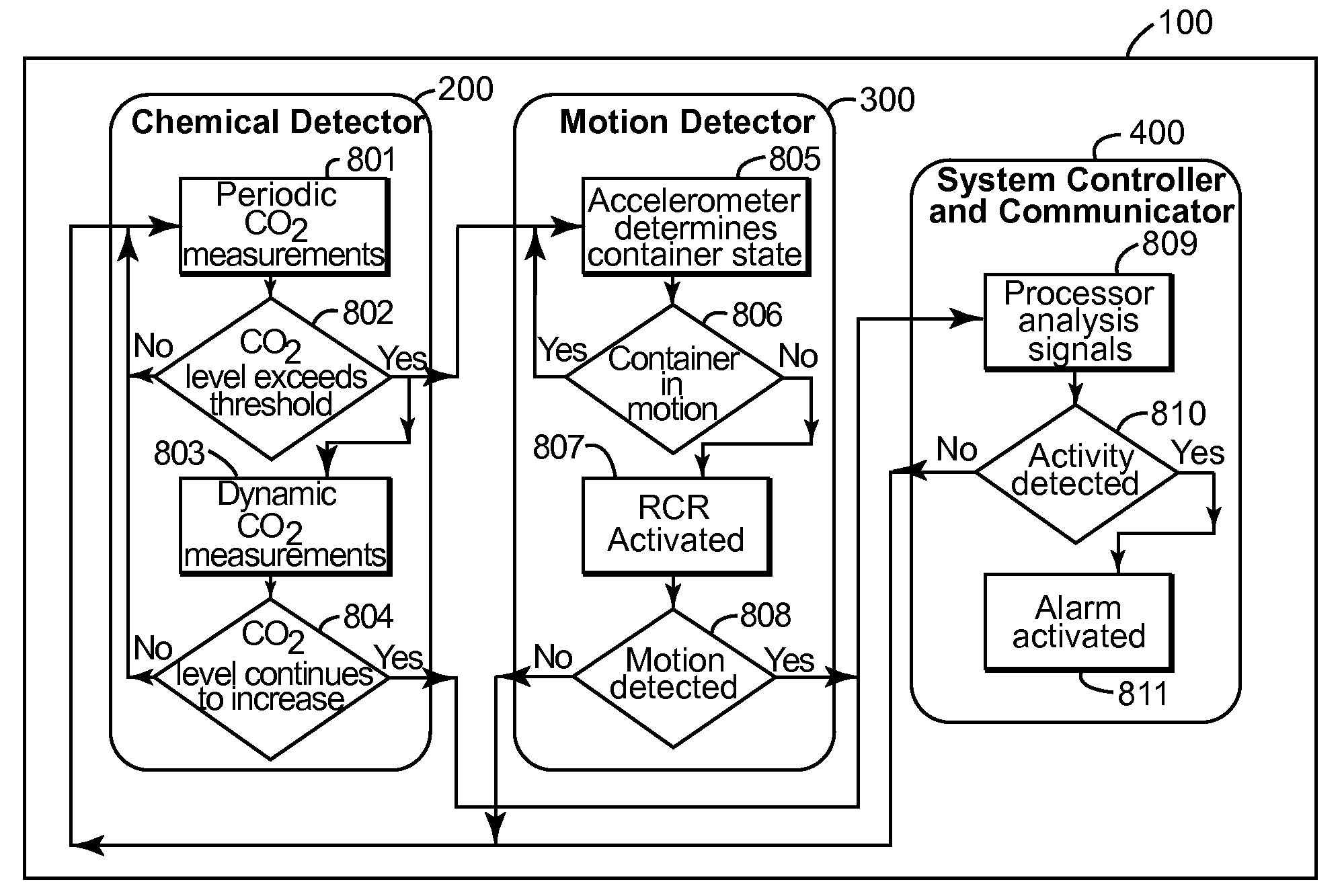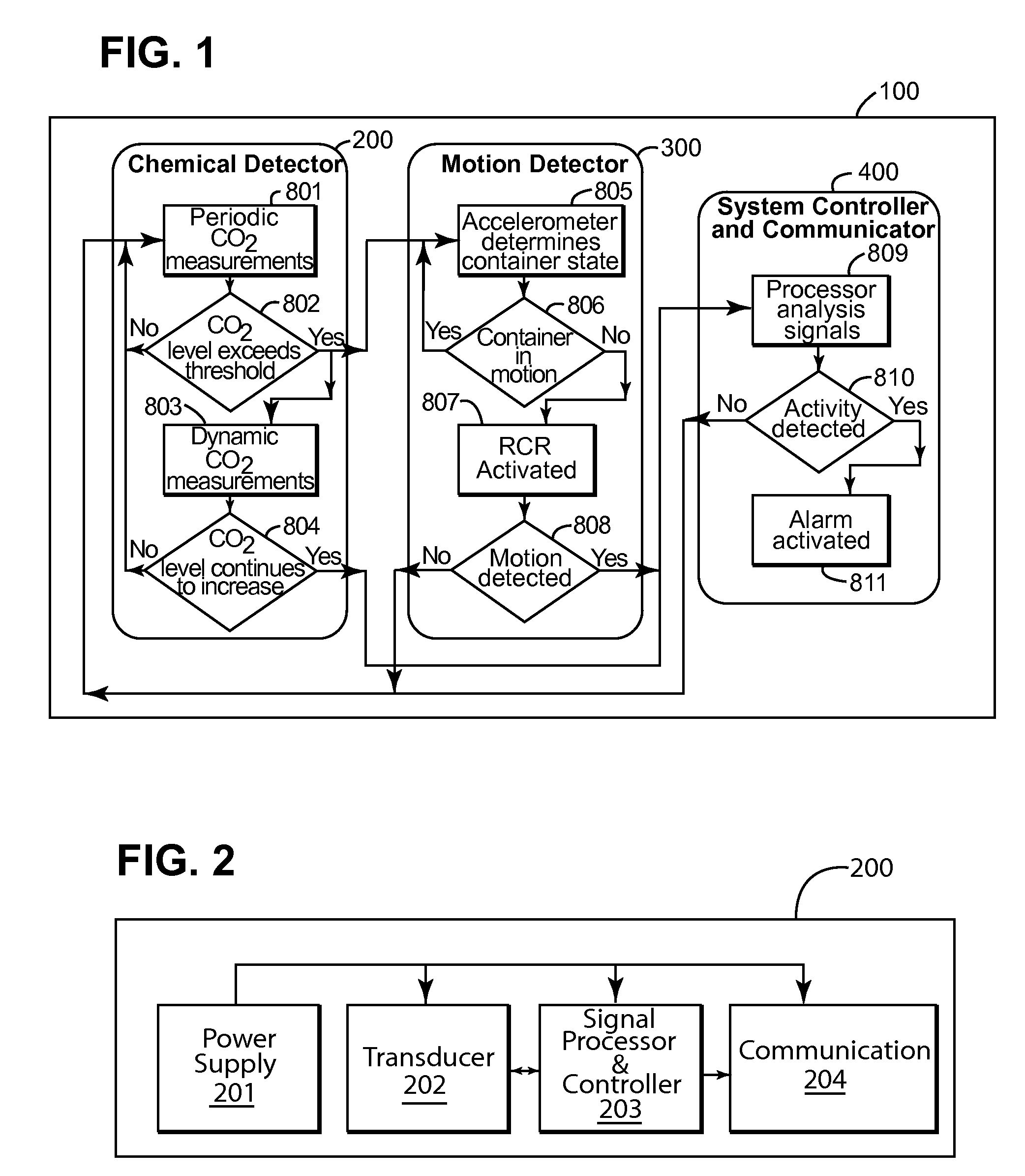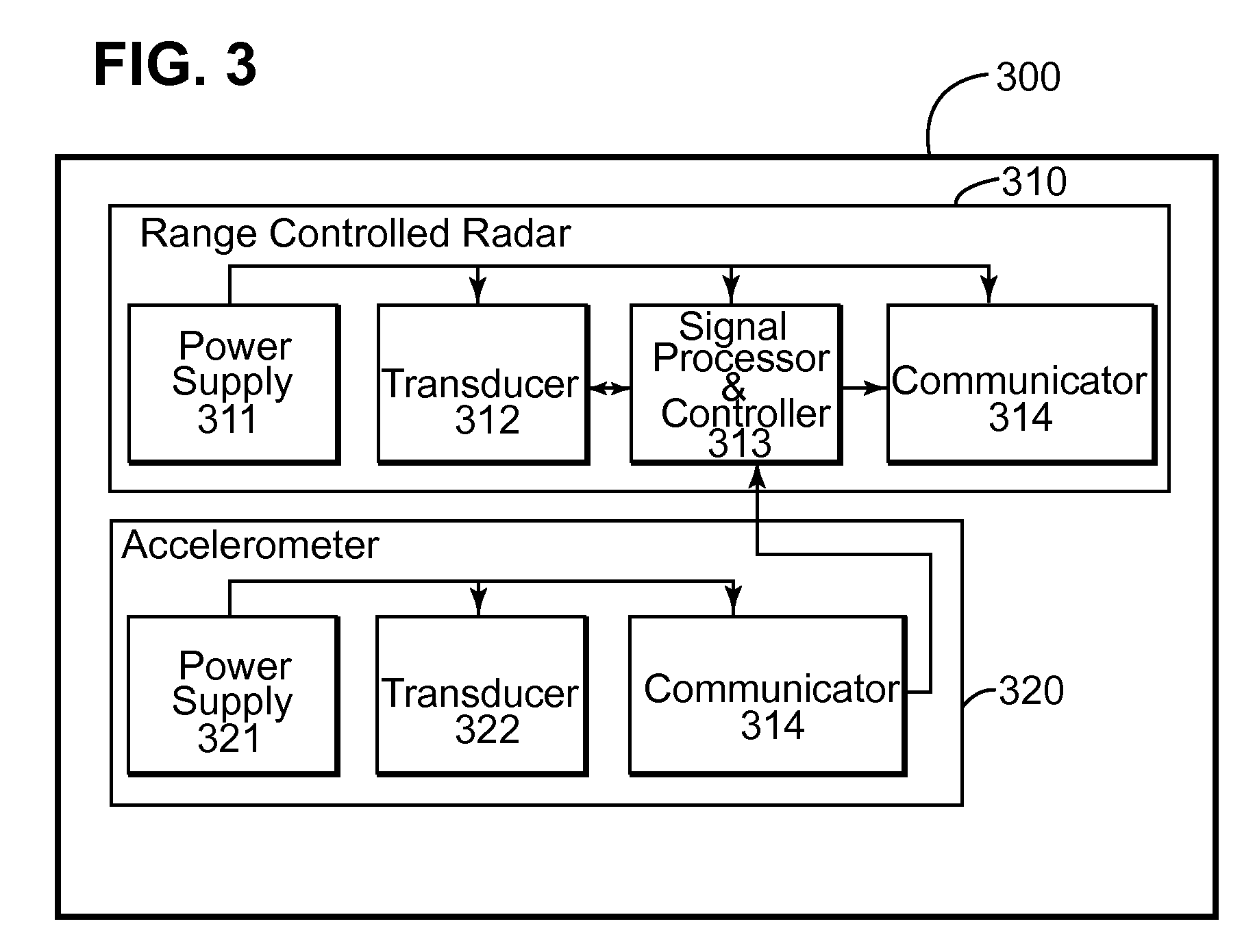Method and system to detect humans or animals within confined spaces with a low rate of false alarms
a technology of confined spaces and detection methods, applied in the field of security detection systems, can solve the problems of high false alarm rate and other problems, adversely affected by vibration, acceleration, temperature, weather, etc., and achieve the effect of accurate detection of presence, low false alarm rate, and mitigation of at least the potential sources of chemical and/or motion detector nois
- Summary
- Abstract
- Description
- Claims
- Application Information
AI Technical Summary
Benefits of technology
Problems solved by technology
Method used
Image
Examples
Embodiment Construction
[0032]FIG. 1 is a diagram illustrating interaction of components 200, 300, 400 of an embodiment of a detection system 100 and a flowchart of a method of operating the detection system. The method may include one or more of steps 801, 802, 803, 804, 805, 806, 807, 808, 809, 810, and 811, each of which will be further described below.
[0033]Referring now to FIG. 1, the detection system 100 may include a chemical detector 200 configured to detect respiratory gases, a motion detector 300 configured to detect a predetermined amount of motion, and a system controller / communicator 400 configured to manage the operation of and process / analyze the data outputted from the chemical detector 200 and the motion detector 300. When the chemical detector 200 detects a predetermined level of respiratory gas within the confined space, the chemical detector 200 may send an activation signal to the motion detector 300 directly and / or via the system controller / communicator 400. Although not shown in FIG....
PUM
 Login to View More
Login to View More Abstract
Description
Claims
Application Information
 Login to View More
Login to View More - R&D
- Intellectual Property
- Life Sciences
- Materials
- Tech Scout
- Unparalleled Data Quality
- Higher Quality Content
- 60% Fewer Hallucinations
Browse by: Latest US Patents, China's latest patents, Technical Efficacy Thesaurus, Application Domain, Technology Topic, Popular Technical Reports.
© 2025 PatSnap. All rights reserved.Legal|Privacy policy|Modern Slavery Act Transparency Statement|Sitemap|About US| Contact US: help@patsnap.com



